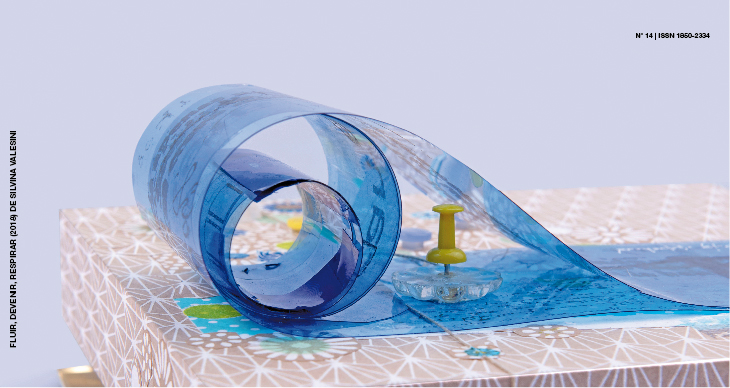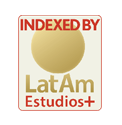Three Latin American Photographers and the Image of the Father. The Affective Resignification of the Family Album
DOI:
https://doi.org/10.24215/24691488e010Keywords:
Photography, Latin American, Chen, Barreto, SancariAbstract
The present essay analyzes the representation of the father in the editorial productionof three Latin American photographers, the Mexican Gilberto Chen, the Brazilian GilvánBarreto and the Argentine Mariela Sancari. Based on the idea that the paternal imageis constructed from the photographer’s own affections, the analysis of the imagesis articulated with the study of the affection proposed by Baruch Spinoza and RolandBarthes.Downloads
References
Avedon, R. (1974). Unas palabras sobre el retrato. Luna Córnea, (3), 6- 7.
Auster, P. (1990). La invención de la soledad. Barcelona, España: Edhasa.
Barthes, R. (1994). La cámara lúcida. Barcelona, España: Paidós.
Barreto, G. (2012). Mouscouzinho, Little Moscow. Recife-Pernambuco, Brasil: Tempo d’Imagem.
Berger, J.; Mohr J. (2008). Otra manera de contar. Barcelona, España: Gustavo Gili.
Billingham, R. (1996). Ray’s a laugh. Recuperado de http://www.achtung.photograpy/richard-billingham-rays-a-laugh-1996
Chen, G. (1998). Los abuelos. Ciudad de México, México: Libro de autor.
Chen, G. (1993). Autorretrato. Testimonio de una curación [Obra]. Luna Córnea, (3), 120-121. Recuperado de https://issuu.com/c_imagen/docs/lunacornea_3
De Moraes, V., de Moraes, P. O. (1968). Mergulhador. Río de Janeiro, Brasil: Atelier del arte.
Didi-Huberman. G. (2014). Cuando las imágenes tocan lo real. Recuperado de https://macba.cat.uploads
Meyer, P. (1991). Fotografío para recordar [CD]. Los Ángeles, Estados Unidos.
Ruiz Pérez, B. M. (2013). El viaje de los afectos. Ponencia presentada en el II Encuentro Pensamiento y Reflexión en Fotografía. Sao Paulo, Brasil.
Ruiz Pérez, B. M. (2015). El viaje de los afectos: la representación del afecto en la fotografía familiar (Tesis de doctorado). Universidad Autónoma del
Estado de Morelos, Morelos, México.
Ruiz Pérez, B.M. (2013). Entrevista a Gilván Barreto. Sao Paulo, Brasil: la autora.
Ruiz Pérez, B.M. (2017). Entrevista a Gilberto Chen. Cuernavaca, Morelos, México: la autora.
Ruiz Pérez, B.M. (2017). Entrevista a Mariela Sancari. Cuernavaca, Morelos, México: la autora.
Sancari, M. (2014). Moisés. Madrid, España: La Fábrica.
Sancari, M. (2011). Caballo de dos cabezas [Serie fotográfica]. Recuperado de htpp//latphotomaganize.com
Saramago, J. (1997). El año de la muerte de Ricardo Reis. Ciudad de México, México: Alfaguara.
Saramago, J. (1998). Todos los nombres. Ciudad de México, México: Alfaguara.
Spinoza, B. (2007). Ética, Tratado Teológico-Político. Ciudad de México, México: Porrúa.
Tarkovski, A. (1975). Poemas de El espejo. Recuperado de placard.blogspot.mx/2011/12/poemas-de-el-espejo-arseny-tarkovsky.html
Toscan du Plantier, D. (Productor) y Tarkovski, A. (Director). (1983). Nostalgia [Película]. Italia-Unión Soviética.
Downloads
Published
How to Cite
Issue
Section
License
The acceptance of the manuscript by the magazine means the non-exclusive cession of the property rights of the authors in favour of the editor, who allows the reuse, after publication (post print), under a license Attribution-NonCommercial-NoDerivatives 4.0 International. According to these terms, the material can be copied and redistributed by any means or in any format as long as a) the author and original source of the publication are quoted (magazine and URL of the work), access to the license is provided and whether changes have been made is mentioned; and b) the material is not used for commercial purposes.
The cession of non-exclusive rights means that after the publication (post print) in Arte e Investigación the authors can publish their work in any language, means and format; in such cases it must be mentioned that the material was originally published in this magazine. Such cession also means the authorization of the authors for the work to be collected by SEDICI, the institutional archive of the National University of La Plata, and to be spread in the databases that the editorial team considers appropriate to increase the visibility of the publication and its authors.
Moreover, the magazine encourages the authors to deposit their productions in other institutional and thematic archives under the principle that offering the society the scientific and academic production without any restrictions contributes to a greater exchange of the global knowledge.


































